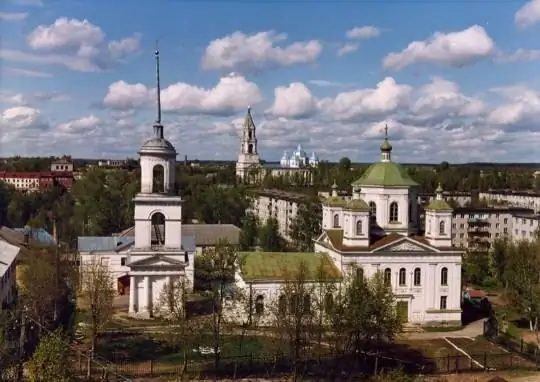
Description of the attraction
In the city of Kashin there is one of the most famous and recognizable cathedrals belonging to the Tver diocese - the Cathedral in honor of the Ascension of the Lord. The temple is located on Unity Square, building 1.
To date, the history of the Ascension Cathedral is known in some detail. Back in the 17th century, Tsar Mikhail Fedorovich made a generous donation in the form of a plot of land intended for the construction of the Ascension Church in Kashin. It was on this site that the Ascension Church stood in the past, which was destroyed in 1709. The new cathedral has become one of the largest buildings located in Kashin. The Orthodox shrine is located on one of the banks of the Kashinka River, flowing in the central part of the settlement, while it is perfectly visible from the windows of the Resurrection Cathedral.
In the period between 1857 and 1860, the building of the cathedral was somewhat rebuilt and modified, moreover, its internal space was noticeably increased, which was facilitated by the financial support of the merchant N. V. Terlikov. During the 1867-1870s, the Resurrection Church acquired its original form with the donated funds of merchants named Dorogutins, as well as the merchant Terlikov. In mid-1929, all crosses were removed from the cathedral, and the iconostasis was completely dismantled. In the course of 1962, the Resurrection Church was closed, and a furniture warehouse was located in its premises, a little later - a youth organization.
In terms of compositional solutions, it is important to note that the Cathedral of the Ascension of the Lord is made taking into account the interaction of the spaces of the two prevailing dominants. The cube is made especially massive, which emphasizes its five-domed light. It is important to note that the group of bells made in the form of a pyramid is not built on the principle of comparing similar shapes, but on the complete opposition of square and light angular ends and a high-altitude middle drum, perfectly reproducing the traditionally made octagon. The cathedral premises are characterized by some compactness and centricity. The apse is made semicircular and fully corresponds to the classical geometry of the main volume. The refectory room is slightly lowered, which is why it does not occupy such a significant place in the overall panorama. All facades of a cubic static array support equally well-made gables.
At the Ascension Cathedral there is a rather high bell tower, which was built in 1849 in the Empire style. The project for it was developed by the famous provincial architect I. F. Lvov. The bell tower is made of two tiers and is equipped with a thin spire; The wedding was carried out with the help of a small cupola and a large carved cross, which helped to preserve the strict and clear architectural forms characteristic of the first quarter of the 19th century.
In the 1990s, the Ascension Cathedral was freed and given into the hands of the parishioners, so repair and restoration work soon began. During the restoration work in 1993, the cathedral was opened for services - soon it became the main city cathedral.
One of the important dates celebrated in the church was June 25 - the day of memory of the holy noble princess Anna Kashinskaya. In 1993, the shrine with the relics of this particular saint was transferred to the building of the Church of the Nativity of Christ on the Mountain, while the ceremony of transferring the relics was especially solemn. Today, particles of the relics of the holy noble princess Anna Kashinskaya are in all the churches of the city.
Other relics are also kept in the cathedral: an icon with the relics of St. John, particles of the relics of Romanova Elizabeth Feodorovna, as well as particles of the relics of St. Macarius of Kalyazinsky.
In 1998, the Ascension Cathedral was skillfully decorated with picturesque frescoes. Stucco works were also carried out in the building. Even today, painstaking work is still going on dedicated to the restoration of such valuable elements of the iconostasis.
In mid-2001, a high-rise fence was built around the perimeter of the cathedral - from that moment on, the fruitful ennobling and planting of greenery began in the adjacent territory located around the church building.






